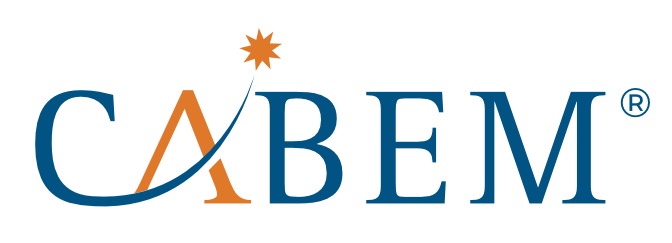Top 5 Reasons for Developing Competency Plans
A strategic and well-developed competency development plan enhances your workforce skills, reduces frustration in employees, and strengthens the team for higher performance. It is the most effective way of providing proper learning and training for a highly responsive workforce and sustainable profitability. It is a learning action plan designed to improve immediate performance and foster readiness for long-term career goals. A competency development plan ensures that all employees have the necessary certifications and compliance endorsements. This article will examine the top 5 reasons why organizations should develop competency plans, the steps that should be taken to develop an effective plan, and the benefits of competency-based learning.
Top 5 Reasons Why Companies Should Develop Competency Plans:
Competency management is the process of identifying, developing, and measuring the skills and behaviors that are necessary for employees to perform their job roles effectively. Companies should develop competency development plans because they help align employee skills and behaviors with business goals and objectives. Here are 5 reasons why companies should develop competency management plans:
- Improved Performance: Competency plans can help identify areas where employees need training and development to improve their performance. By providing targeted training and development opportunities, companies can help employees develop the skills and behaviors they need to be successful in their roles.
- Increased Efficiency: Competency plans can help ensure that employees are working efficiently and effectively. By identifying and measuring key competencies, companies can optimize their workforce and ensure that employees are working on tasks that align with their strengths and abilities.
- Succession Planning: Competency plans can help identify potential leaders and prepare them for leadership roles. By identifying key competencies for leadership roles, companies can create development plans for employees who show potential for advancement.
- Talent Management: Competency plans can help companies identify and retain top talent. By understanding the skills and behaviors that are necessary for success in specific roles, companies can create career paths and development plans that help employees achieve their goals.
- Alignment with Business Objectives: Competency plans help align employee skills and behaviors with business objectives. By identifying the competencies that are necessary for success in specific roles, companies can ensure that employees are working towards the same goals and objectives.
What Steps Should Be Taken To Develop an Effective Competency Development Plan?
Creating a competency development plan involves a structured process that helps identify the necessary competencies and behaviors for employees to achieve their job goals and objectives.
Here are six steps to creating a competency development plan:
- Identify the competencies: The first step in creating a competency development plan is to identify the competencies that are required for success in the role. These competencies should be aligned with the business goals and objectives. You can use job descriptions, performance reviews, and interviews with subject matter experts to identify the competencies required for the role.
- Assess the current competencies: Once you have identified the competencies required for the role, you need to assess the current competencies of the employee. This can be done through performance evaluations, skills assessments, or feedback from supervisors and colleagues.
- Identify development needs: After assessing the current competencies of the employee, you can identify the areas where development is needed. This can be done by comparing the current competencies with the required competencies and identifying the gaps.
- Decide on the Management System: Every competency development program needs a system that can ensure effective implementation, accountability, as well as employee participation. Cabem’s Competency Manager compiles and creates competencies in a logical way that institutionalized enterprise employee knowledge.
- Develop a plan: Based on the identified development needs, you can develop a plan that outlines the necessary training, mentoring, coaching, or other development activities required to bridge the competency gaps. The plan should include specific objectives, timelines, and measures of success.
- Monitor and evaluate progress: Once the plan is in place, it is important to monitor and evaluate progress. This can be done through regular check-ins with the employee, performance evaluations, or other feedback mechanisms. Adjustments can be made to the plan as needed to ensure that it remains relevant and effective.
What are the Benefits to Competency Based Learning?
- Manage Competency – Identify the hard and soft skills needed to be fully competent, and automate the process to complete each requirement.
- Train Individuals Online – Assign training with a variety of different learning styles such as multiple choice tests, open response, virtual classroom, performance assessments, and more.
- Assign and Manage Risk – Identify and address the highest priority risks to your organization today or in the future, as well as publish reports on actionable data.
- Maintain Compliance – Adhere to ISO, OSHA, and other regulations with audit reporting, document tracking, archived training materials, and more.
- Track Certifications – Eliminate spreadsheets with document libraries to store employee certifications, credentials, and any other records, with notifications for expirations.
- Identify and Address Skills Gaps – Run reports to identify the competencies required for emerging roles, important clients, and new teams. Identify what training is not being completed.
How Can a Competency Management System Help?
With the help of technology and data analytics, organizations can now create detailed competency frameworks that capture the skills, knowledge, and behaviors required for employees to perform their job roles effectively. These frameworks can be used to guide the development of training and development programs, performance evaluations, and succession planning. They can also be used to identify skill gaps and training needs, ensuring that employees have the skills and knowledge required to meet the needs of the organization.
An automated skills matrix as part of a competency-based training program can be used to track, measure, and visualize data in real-time. It allows organizations to gather a balanced and successful team in which everyone has their strengths and weaknesses. Finding people with complementary competencies will improve employee engagement and job performance.
Everyone has many tasks that they need to accomplish, and desired skills to be able to do so competently. Cabem’s Competency Manager helps bridge this gap, to compile and create competencies in a logical way that institutionalized enterprise employee knowledge. We found that many training plans operate within a vacuum and are not formulated from the top down and to address needs of the whole organization. Our system allows organizations to create competencies and map them to departments, roles, locations, and other segments across the enterprise. Contact us today to get started.

